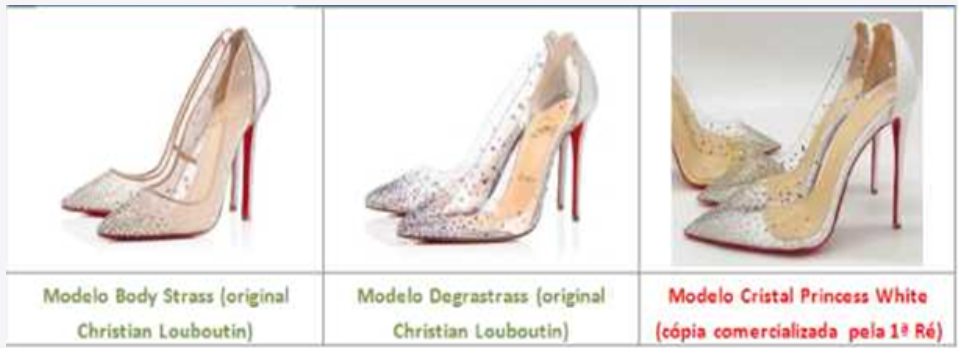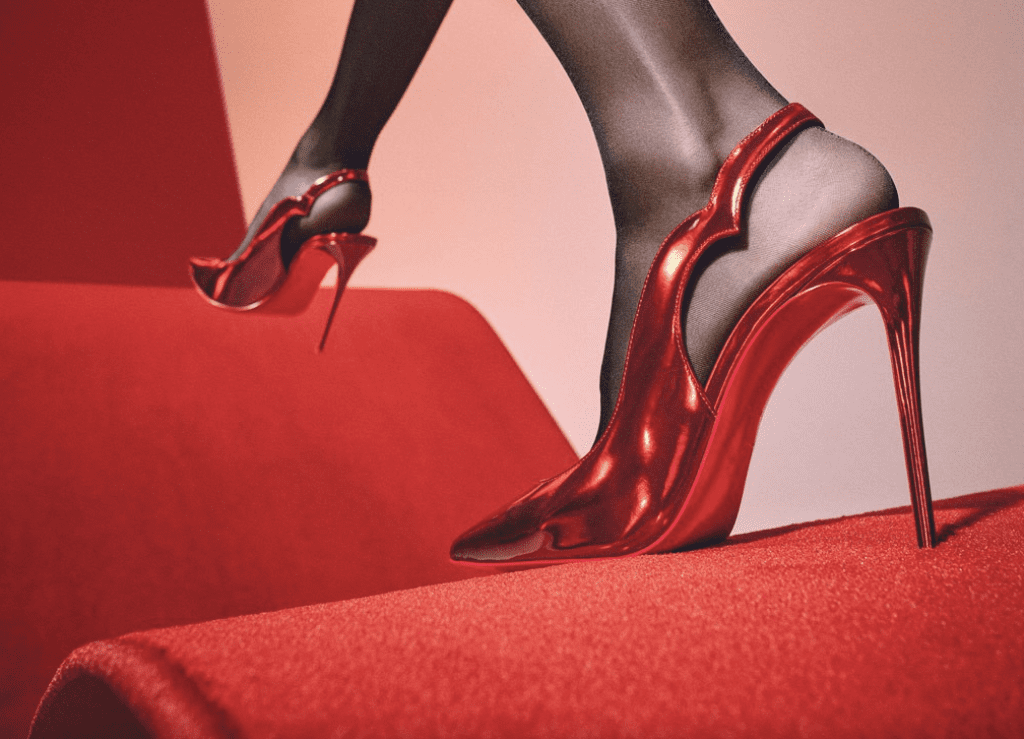Christian Louboutin has prevailed in the latest round of a lawsuit that centers on its famous red soles in Brazil. In a decision dated March 22, the Appellate Court of Sao Paulo sided with Louboutin and affirmed the preliminary injunction previously put in place by the lower court, which blocks the defendant – a Brazilian footwear company – from continuing to manufacture and offer up lookalike high heel shoes bearing a similar red sole. The lawsuit landed before the appeals court in Sao Paulo after the defendant took issue with the injunction (via an interlocutory appeal) on the basis that Louboutin lacks trademark rights in the red sole.
Lacking a trademark registration for its red sole mark in Brazil, Louboutin – which first introduced its signature shoe sole back in 1996 –filed its lawsuit on unfair competition and copyright infringement grounds, arguing that, among other things, its well-known red sole has acquired distinctiveness in the Brazilian market. (For a bit of background: Licks Attorneys Karlo Tinoco and Rob Rodrigues note that Louboutin lodged a trademark application with the Brazilian Patent and Trademark Office in 2009 for its Pantone 18-1663 TPX “Chinese red” sole. However, it has faced pushback, as Brazilian trademark law did not extend to “position trademarks” at the time of its application;. At the same time, while trade dress is not provided by Brazilian law, Tinoco and Rodrigues state that courts have started to apply it on the basis of unfair competition.)
In its defense, the defendant footwear brand primarily argued that Louboutin fell short in light of its (alleged) lack of trademark rights for its red sole in Brazil. Beyond that, it claimed that its inclusion of its own trademark on its red-soled shoes would enable consumers to discern the source of the footwear and remove the potential for consumer confusion.
With “the notoriety of the red sole and trade dress of Christian Louboutin” shoes – namely, its Modelo Body Strass and Modelo Degrastrass designs – in mind, the Appellate Court of Sao Paulo upheld the injunction in its decision last month. In particular, the court concluded that “the main distinctive signs used to identify products and services are a company’s name” and logo, but in a “specialized market, such as fashion, there are other traits employed by different designers in their works that over time can become synonymous with the brand, itself.” Among these are “graphic-visual elements developed precisely for the purpose of distinguishing [a company’s products] from those of their competitors,” such as Christian Louboutin’s red shoe soles.

“By confirming the preliminary injunction granted by the trial judge, the Appellate Court of Sao Paulo has committed to the protection of creations in the fashion industry against misappropriation even without a patent design or trademark registration,” Tinoco and Rodrigues stated, reflecting on the appeals court’s decision. They also noted that the decision adds to a growing “consolidation of case law that admits the infringement of trade dress even when all of the elements of the trade dress are not used by the infringer.”
THE BIGGER PICTURE: The decision follows from an overhaul of trademark law in Brazil in recent years, with the Brazilian Patent and Trademark Office (“BPTO”) first starting to accept applications for registration for position trademarks on October 1, 2021. “While position marks were previously acknowledged by the BPTO and by the courts,” Brazilian trademark attorneys Ana Clara Ribeiro and Paula Giacomazzi Camargo stated at the time that such marks “had yet to qualify for separate trademark registration; most brand owners” – including adidas, New Balance, etc. – “registered them either as figurative or three-dimensional marks.”
Specifically, the BPTO defines position marks that are eligible for registration as consisting of: “a distinctive set capable of identifying products or services and distinguishing them from others that are identical or similar, provided that: (1) it is formed by the application of a sign in a singular and specific position on a given support; and (2) the application of the sign in said position of the support can be dissociated from any technical or functional effect.”
The BPTO’s move to provide specific protections for marks that are characterized by their particular position on a product “offers a new mode of protection for brand owners in a growing market,” Ribeiro and Camargo assert, noting that VF Corp.-owned brand Kipling was the first to file a position mark application in Brazil, with more native and international brand owners expected to follow suit, as “Brazil is growing as a target market for foreign and local businesses alike.” In terms of the response of fashion and luxury entities, in particular, to the protection of position trademarks in Brazil, Venturini IP’s Louis Lozouet and Adriane Bonato stated early this year that they expect these to be among the industries that will “be inclined to create more innovative trademarks to bring an added value to their business and mainly to clients and customers by means of more sophisticated trademark protection strategies.”
Following some initial technical obstacles involving the filing, petitioning and examination of position marks, the BPTO is expected to start issuing office actions, approvals, and refusals involving position mark applications this year, according to a note from Montaury Pimenta, Machado & Vieira de Mello, which will serve to consolidate applications for registration for these “non-traditional” marks in the Brazilian trademark system. The BPTO is also slated to publish the new Trademark Guidelines in the second half of the year, which could shed further light on the state of position filings to date.
As for the application for registration that Louboutin filed for the position of its red sole trademark back in 2009, that is still pending before the BPTO.











